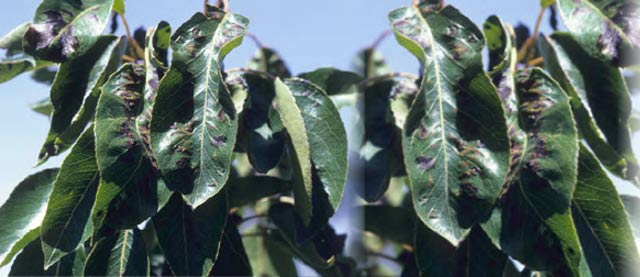The pear leaf blister mite is a problem mostly in pears, but can occasionally affect apples.
Pest identification
Pear leaf blister mites are significantly smaller than most other pest mite species and are difficult to observe in the field using a standard hand lens.
Pear leaf blister mites can be identified by their white or pinkish appearance. The abdomen is ringed and elongated and it has two pairs of legs located next to its head.
Damage
Pear leaf blister mite damage can occur on leaves, fruit and stems.
It is most noticeable on the leaves and appears as small, green pimples on the underside, which then develop into blisters.
These blisters take on a reddish appearance, eventually becoming brown dead spots.
Infested fruit will have depressed, russetted spots.
Monitoring
Monitoring for pear leaf blister mites once a fortnight is recommended, although if conditions are hot and dry, more frequent monitoring may be required.
Management
Cultural and physical
When trees are dusty, mite infestations can become worse. If weather conditions are hot and dry, orchard traffic should be limited and operators should drive slowly to limit dust on trees.
Maintaining a green ground cover can reduce dust while also providing an attractive alternative habitat for mites.
Biological
Predatory mites could be useful for controlling pear leaf blister mites.
Chemical
Decisions to spray for pear leaf blister mites should be based on the results of regular mite monitoring.
Download the Orchard plant protection guide
See this article in Tree Fruit Dec 2021




















